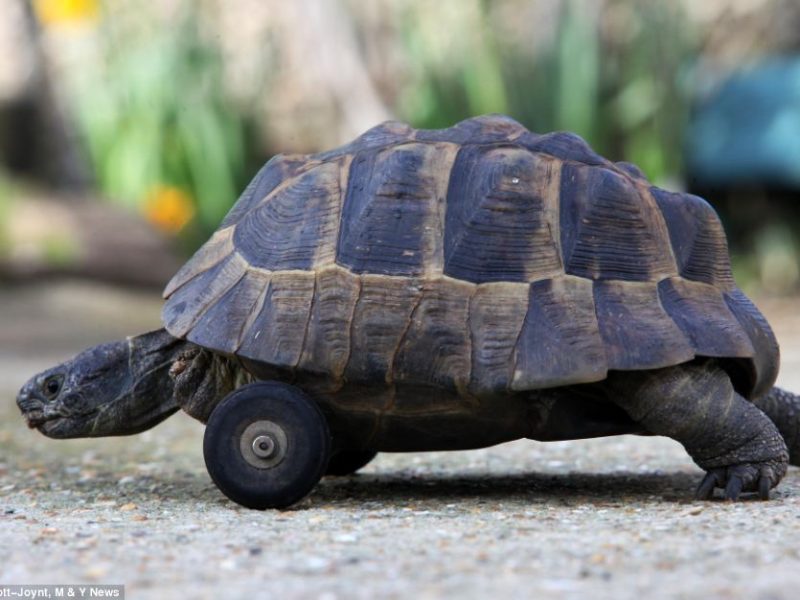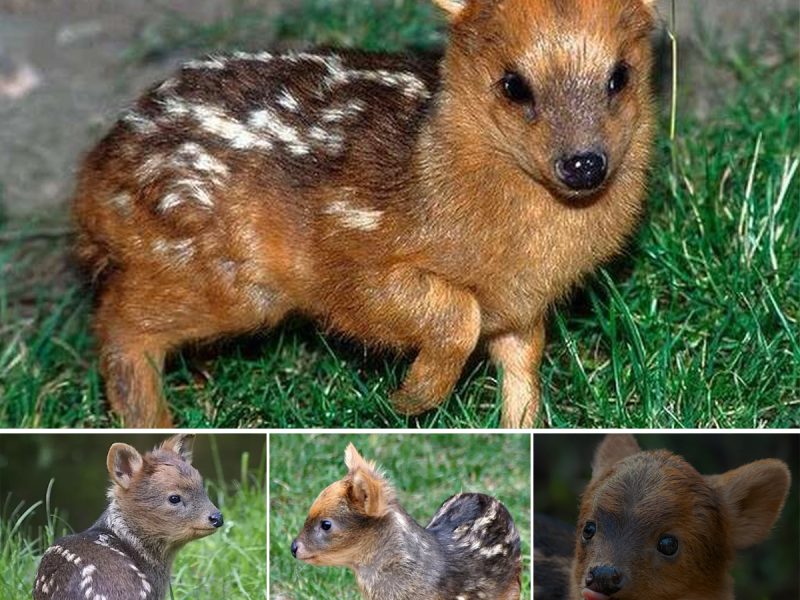Did you know that wild pigeons could be much bigger than the cute ones you often feed in the park? If you ever have a chance to visit the beautiful New Guinea, Australia, you will be able to meet these gorgeous creatures in the forests of this charming island.
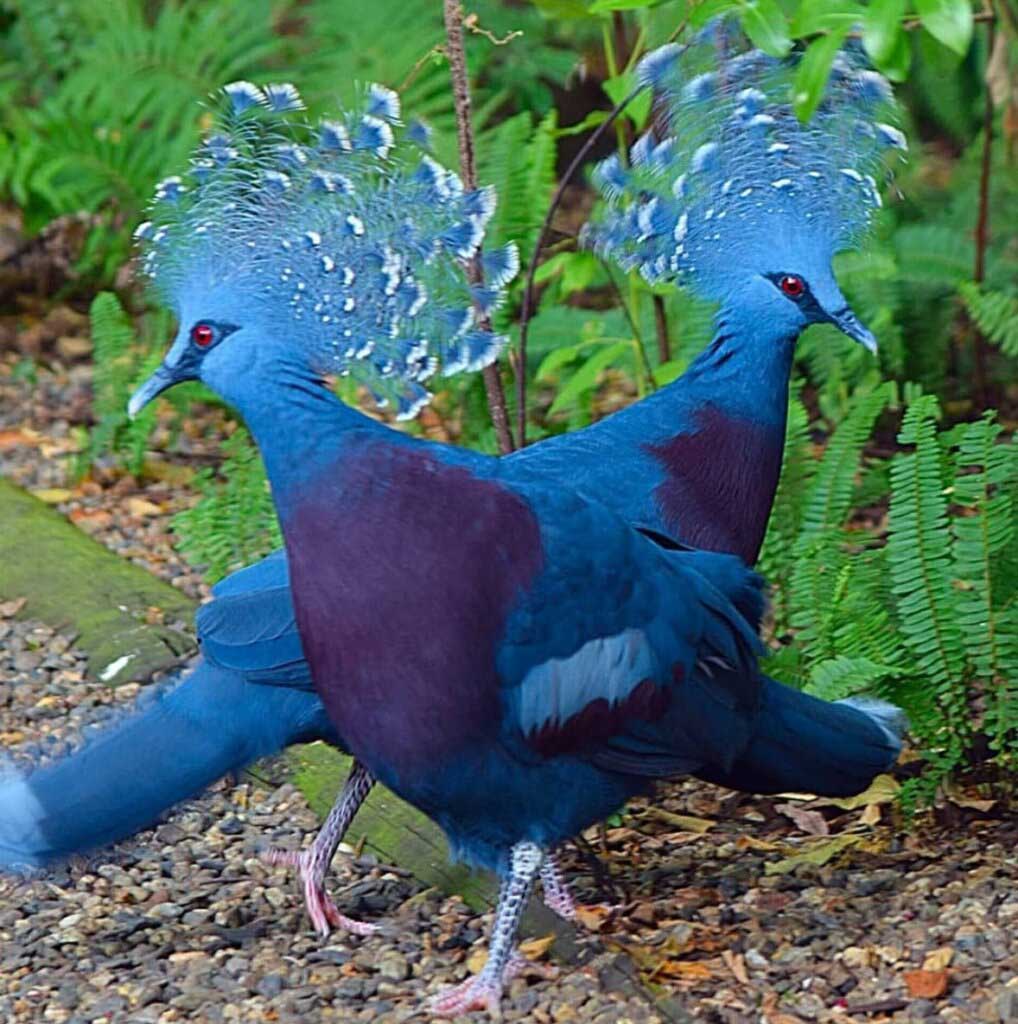
Image credits: Instagram/steve___prince
The crowned pigeons (aka the Goura) is a genus of birds in the family Columbidae that contains four large species of pigeon, including the Western crowned pigeon (Goura cristata), the Scheepmaker’s crowned pigeon (Goura scheepmakeri), the Sclater’s crowned pigeon (Goura sclaterii) and the Victoria crowned pigeon (Goura victoria) – which is also the biggest one. In fact, an adult Vitoria crowned pigeon is approximately 29 inches in length.
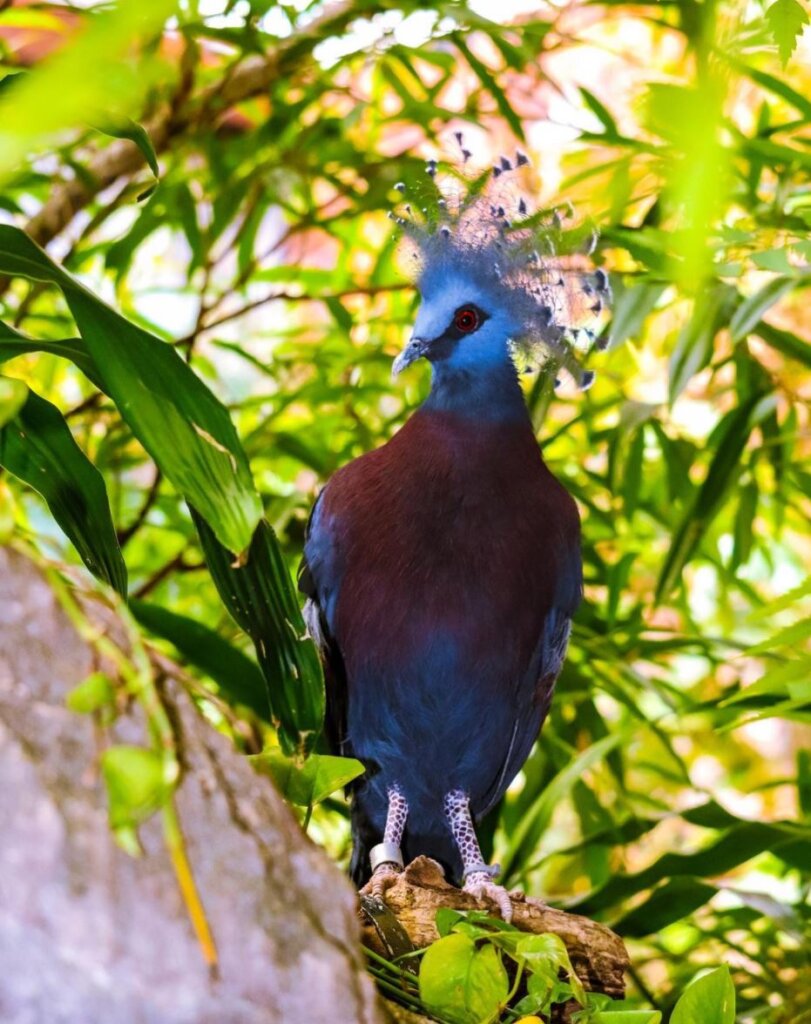
Image credits: Instagram/karuna.yadav05
Even though these birds belong to different species, they look quite similar. The male and the female are also not much different like other bird species, both of them have stunning blue plumages, maroon chests, fierce red eyes and enchanting blue crests with white tips on their heads, making them stand out from the crowd.

Image credits: Instagram/yersontravels
The only difference here is the attitude, as the male has a habit of cooing and bowing in front of the female during courtship. These critters are surprisingly faithful too, they are often monogamous for their whole life.
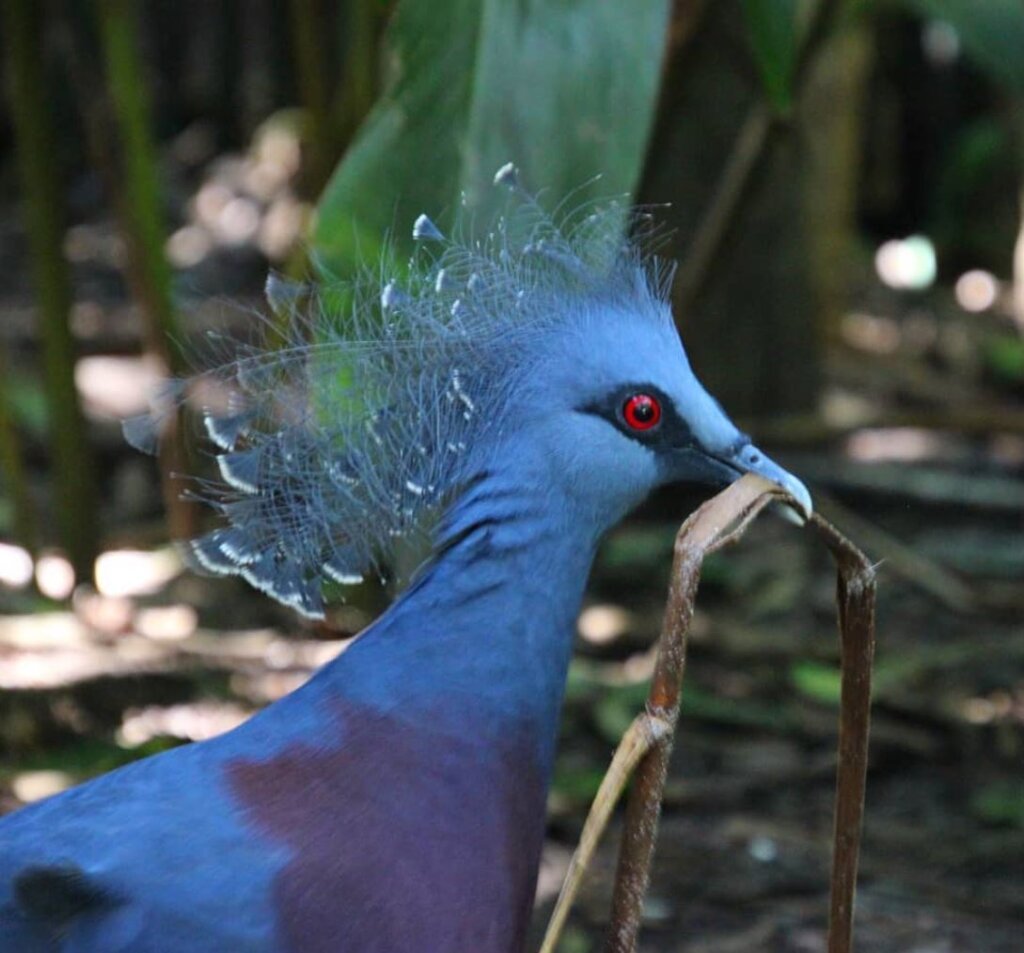
Image credits: Instagram/pktechgirlus
After the birds find their perfect partner, they would build a nest together and place it on a tree. Once the female lays an egg, they also incubate it jointly for 28 to 30 days until it finally hatches.
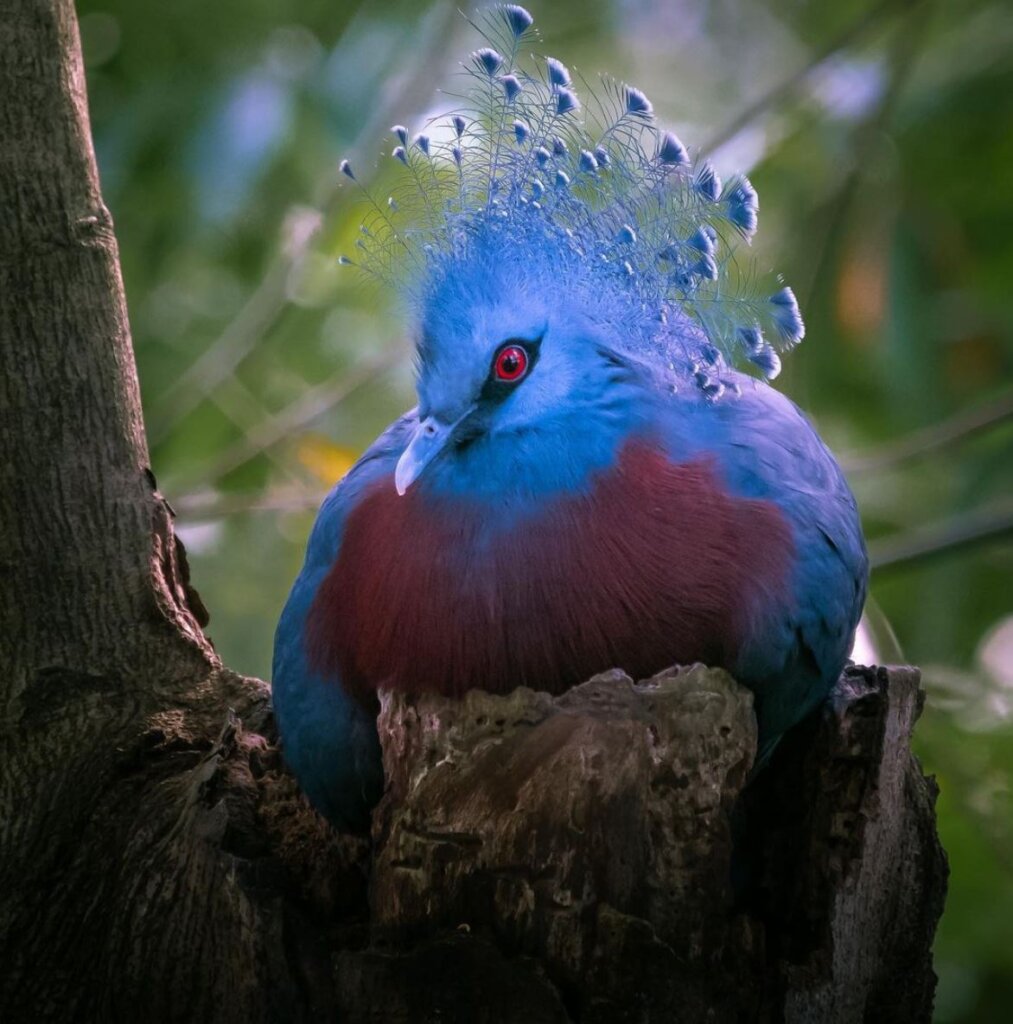
Image credits: Instagram/alines_animalworld
The chick often fledges after 30 days, but it isn’t until 8 or 9 weeks that it can live independently and forage on its own. Crowned pigeons love to eat fallen seeds and ripe fruits on the ground, but sometimes they hunt insects too.
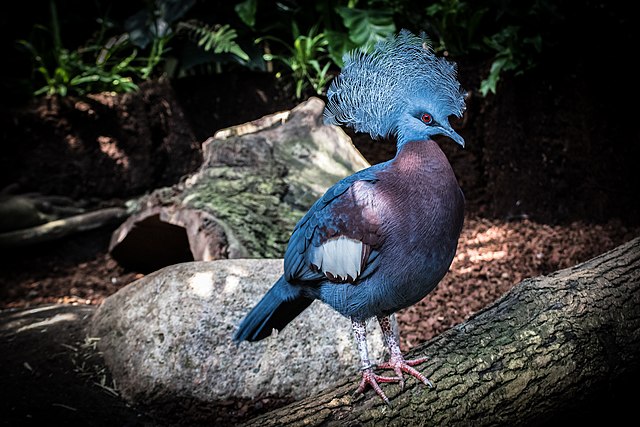
Image credits: Dennis Skyum / CC BY-SA 4.0
The average life span of this bird genus is about 20 years. Sadly, they are now a threatened species due to unstoppable palm oil production and illegal caged-bird trade.
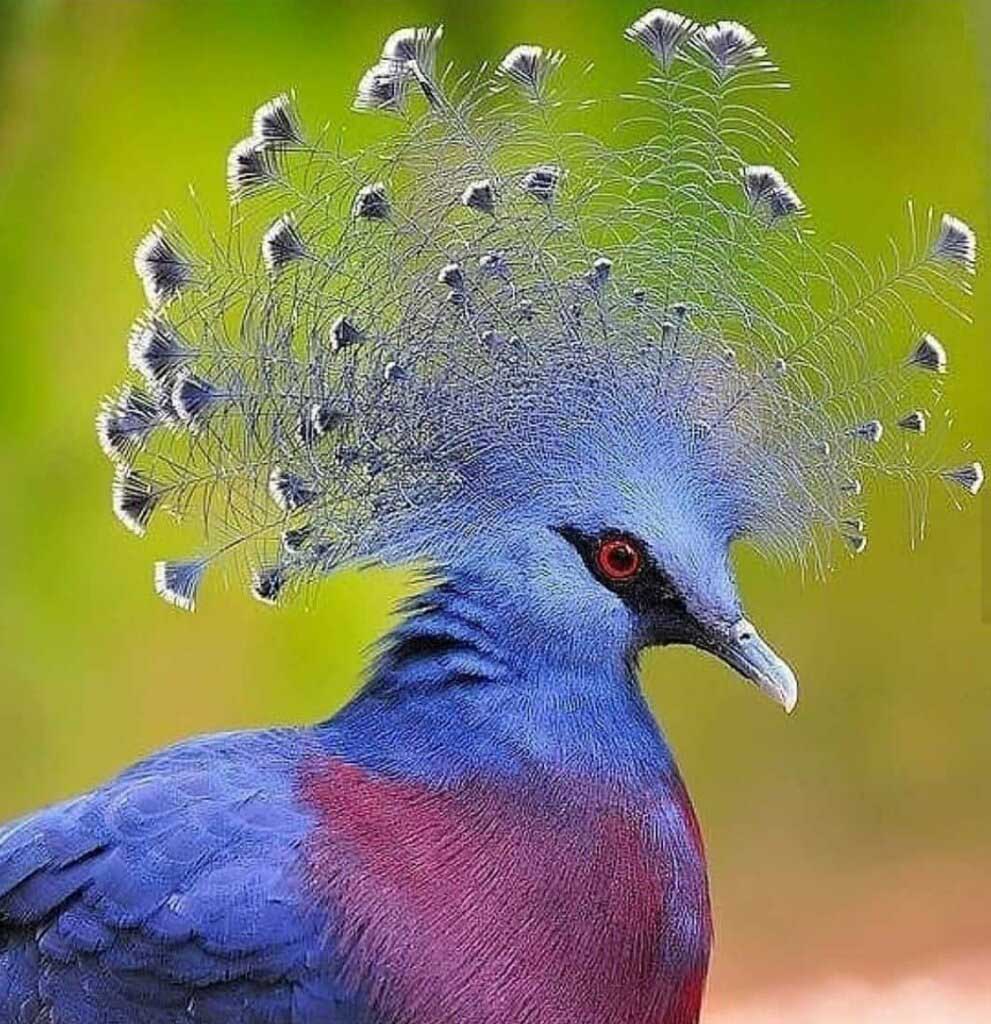
Image credits: Instagram/bestshotz_birds
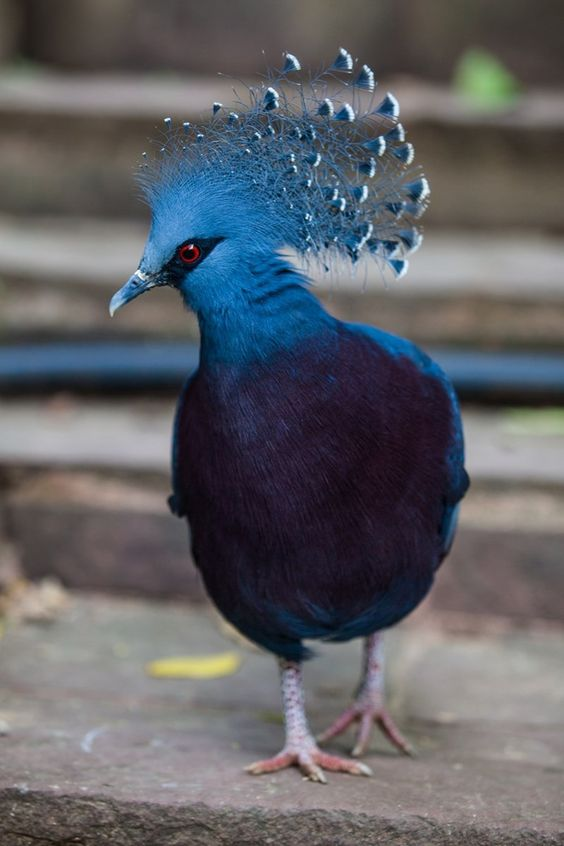
Just take a moment to watch these striking birds in action:
And last but not least, don’t forget to share this post with your friends and family!
